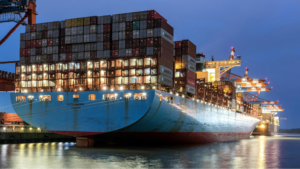What is Landed Cost?
Landed cost represents the total expense incurred in acquiring and delivering a product to its final destination. This comprehensive figure encompasses more than the initial purchase price; it includes a wide array of costs that accrue throughout the supply chain.
Understanding what landed cost actually is and learning how to calculate it, is crucial knowledge that allows businesses to make informed decisions about pricing, profitability, and overall financial performance.
Components of Landed Costs
Understanding the various components that contribute to the total landed cost is crucial for accurate calculation and effective cost management. Let’s break it down to the key elements:
Price of Goods
This is the base cost of the product itself, as paid to the supplier or manufacturer. It’s the starting point for calculating landed cost and can vary depending on factors like negotiation, volume discounts, and currency fluctuations.
Transportation and Freight Costs
These costs cover the entire journey of the goods from the point of origin to the final destination.
- Land Transportation: Costs for trucking, rail transport, or other domestic modes of transportation.
- Ocean/Air Freight: Costs for international shipping, including container fees, port charges, and bunker fuel surcharges.
Customs Duties & Taxes
These government-imposed fees on imported goods are a significant factor in determining total landed cost. They can vary significantly depending on the country of origin, product type, and value
- Import Duties (Tariffs): These are taxes levied by countries on imported goods to protect domestic industries and generate revenue.
- Taxes: In addition to import duties, countries may impose other taxes on imported goods, such as value-added tax (VAT) or goods and services tax (GST).
- Customs Brokerage Fees: These are fees paid to customs brokers for their services in preparing and submitting customs declarations, ensuring compliance with import regulations, and facilitating the clearance of goods through customs.
Insurance
Insurance premiums protect against loss or damage to goods during transit. It’s a crucial component of the total estimated landed cost, as it safeguards against unforeseen events like accidents, theft, or natural disasters.
Handling & Other Operating Costs
These costs cover a range of operational expenses incurred throughout the supply chain:
- Loading/Unloading: Charges for loading and unloading goods at ports, terminals, or warehouses.
- Warehousing: Costs for storing goods in warehouses before final distribution.
- Other Fees: Miscellaneous fees like currency exchange, processing fees, inspection fees, and documentation fees.
By accounting for all these components, businesses can accurately estimate the total landed cost and make informed decisions about pricing, supplier selection, and supply chain optimization.
How To Calculate Landed Cost
Calculating landed cost is essential for understanding the true cost of imported goods. It involves summing up all the components we’ve discussed, from the purchase price to transportation, duties, taxes, and other fees.
Landed Cost Formula
Calculating landed cost involves a straightforward formula:
Landed Cost = Product Cost + Transportation and Freight Costs + Customs Duties and Taxes + Insurance + Operating Costs
Example of Landed Cost Calculation
Let’s illustrate the calculation of landed cost with a real-world scenario:
Say a company is importing 1,000 units of a product to the United States from China. Each unit costs $10, the customs duty is $500 for the whole shipment, and the insurance cost is $250.
The inland transportation to the port in China comes up to $500, while the inland transportation fee from the port in the United States is $800. Lastly, the cost of ocean freight for this shipment is $2,000.
With all this information how do you calculate landed cost? Let’s break it down by referring back to the formula:
Landed Cost = Product Cost + Transportation and Freight Costs + Customs Duties and Taxes + Insurance + Operating Costs
First, let’s calculate the total landed cost of the products themselves:
- Product Cost: With each unit priced at $10, and 1,000 units being imported, the total product cost is $10 x 1,000 = $10,000.
Next, we’ll factor in all the transportation costs to get the goods from China to their final U.S. destination.
- Transportation & Freight Costs: We add up the cost of the inland transportation in China ($500) + ocean freight to transport the goods ($2,000) + the inland transportation cost within the U.S. to the final destination ($800).
- Adding the numbers together we get: $500 + $2,000 + $800 = $3,300
Now we need to consider the custom duties and taxes.
- For this shipment, the customs duty is $500.
Lastly we need to account for the insurance cost.
- For this shipment, the insurance cost is $250.
To calculate the total landed cost of this shipment, let’s put all the numbers together.
$10,000 (product cost) + $3,300 (transportation cost) + $500 (customs duty) + $250 (insurance cost) = $14,050
Therefore the total landed cost is $14,050. Here’s a table below with a breakdown of all the figures used in the calculation above.
Landed Cost Calculation
|
Item |
Cost |
|
Product Cost ($10 x 1,000 units) |
$10,000 |
|
Transportation and Freight Costs ($500 + $2,000 + $800) |
$3,300 |
|
Customs Duties and Taxes |
$500 |
|
Insurance Cost |
$250 |
|
Total Landed Cost (TLC) |
$14,050 |
|
Landed Cost per Unit |
$14.05 |
Importance of Landed Cost Calculation
Landed cost calculation serves as a critical tool for businesses engaged in importing and exporting goods. It provides a comprehensive and accurate view of the total cost incurred to acquire and deliver goods to their final destination.
By understanding the true cost of goods, companies can confidently set competitive prices that ensure a healthy profit margin. This holistic view of costs also enables accurate budgeting and forecasting, leading to better financial planning and resource allocation.
Analyzing landed costs across various suppliers and shipping methods not only improves strategic sourcing but also uncovers opportunities for cost reduction. Furthermore, accurate landed cost estimates facilitate effective inventory management and ensure compliance with customs regulations, minimizing carrying costs and avoiding potential penalties.
Overcoming the Challenges of Landed Cost Calculation
While landed cost calculation is undeniably important for businesses, it can present challenges, particularly when dealing with the uncertainty of customs duties and taxes. These costs vary significantly depending on the product, origin, and destination country, making it difficult to get an accurate estimate of the total landed cost.
To simplify the process of estimating landed costs for businesses, CrimsonLogic offers a powerful Import Cost Estimator. By providing accurate estimates, our calculator empowers you to make informed decisions about sourcing, pricing, and supply chain optimization.





